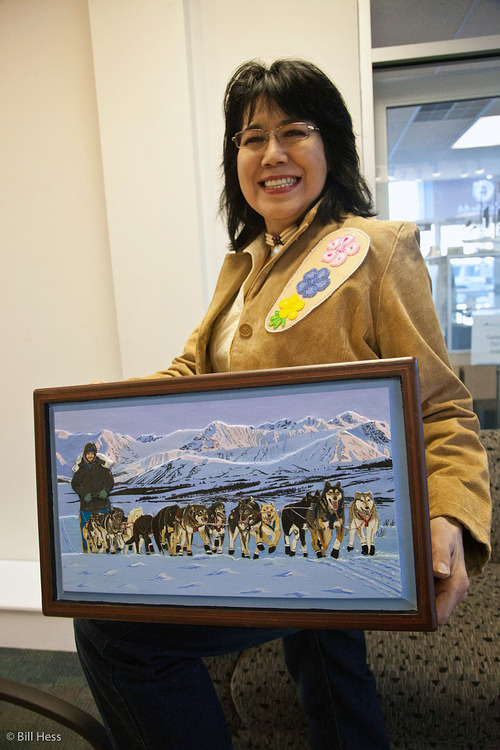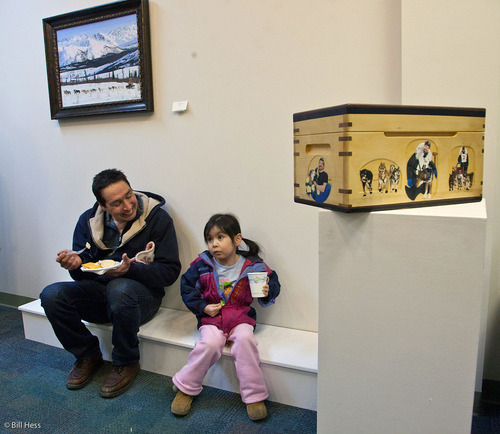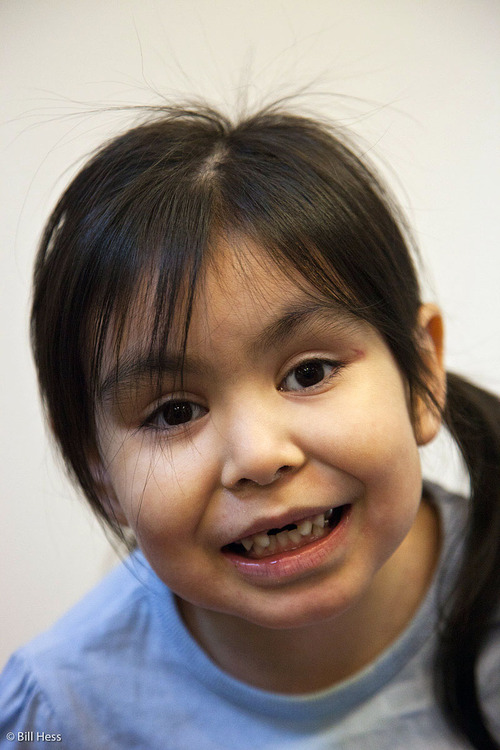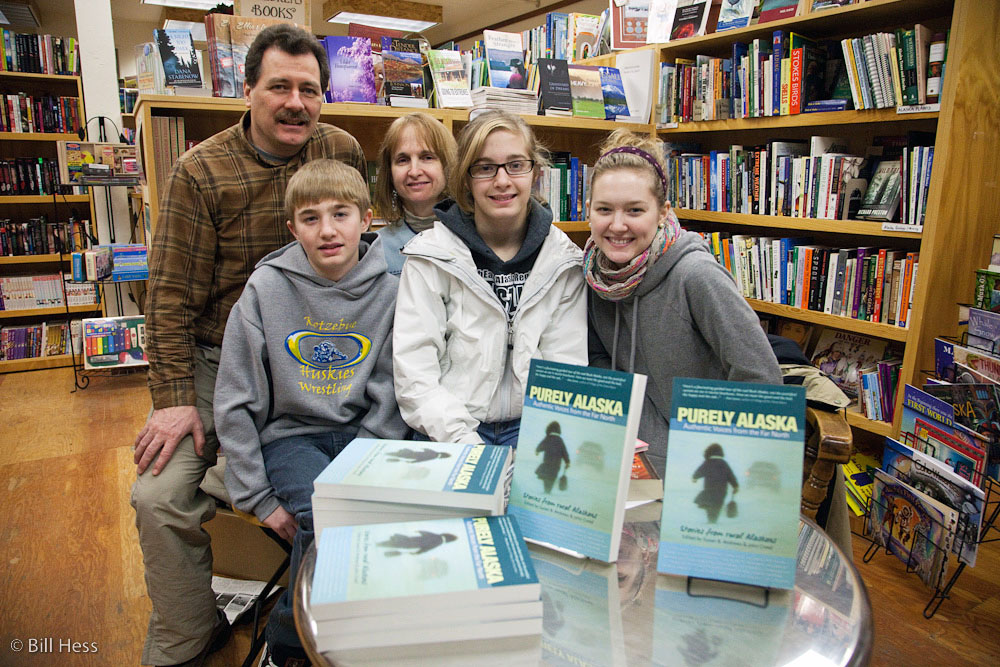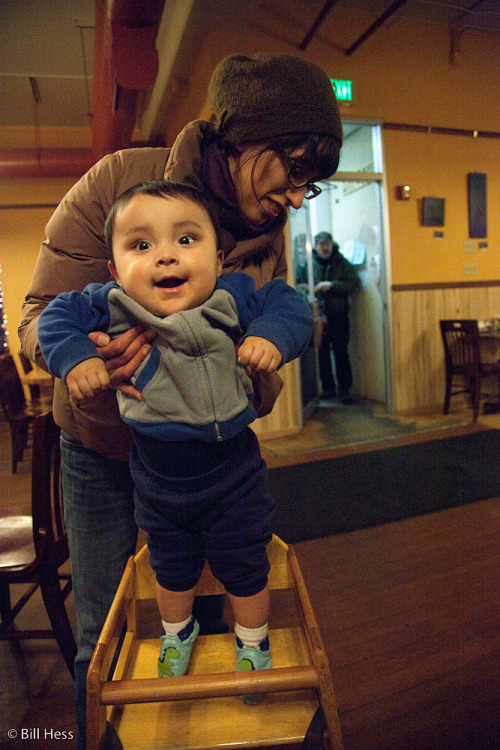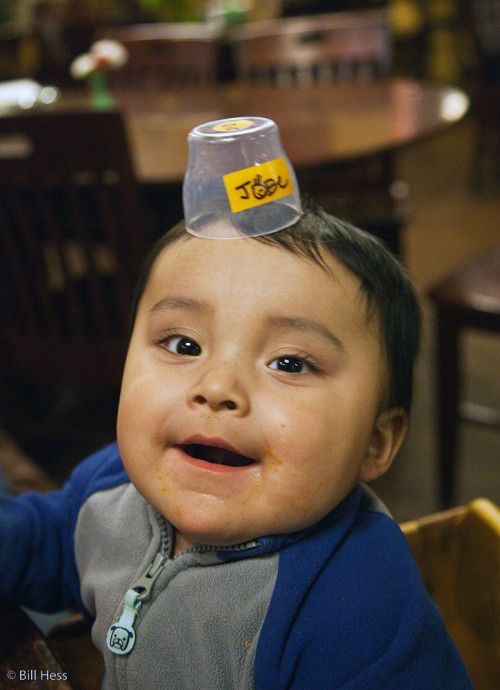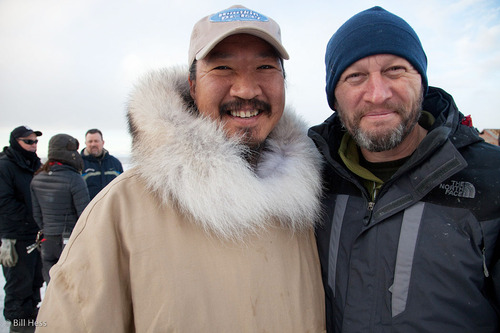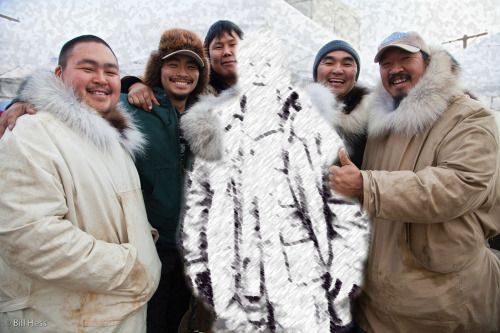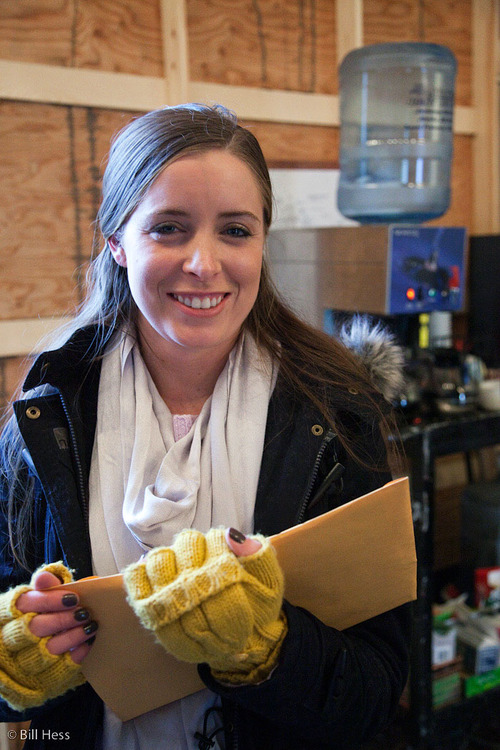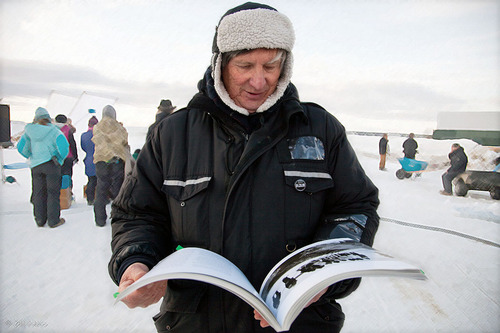With her vision going bad, Rose Albert opens her last Iditarod Show; how she came to wear her famous beret
 Saturday, March 5, 2011 at 3:16PM
Saturday, March 5, 2011 at 3:16PM When I was in Barrow for Kivgiq, I received an email from my friend, Rose Albert, telling me that she would be doing her final Iditarod Art show. She invited me to come.
So of course, when it opened, I was there. The show features her paintings from along the Iditarod Trail, but she also brought a box with her, made of different woods, include alaska yellow cedar that she spent much time searching for.
She carved the box in honor of Lance Mackey, whose Iditarod racing career had appeared to be at its end when he came down with throat cancer. Mackey fought off that cancer and last year won his fourth consecutive race.
That's Mackey above with his team in a 3D image that she carved out of the wood and painted.
Rose will be at the Iditarod restart in Willow tomorrow and she will have the box with her and it will be for sale. She told me the price, but I am not going to quote it here. By my estimation, the value of the box is greater than the quote, so if any reader is a person with a good budget for Alaska Art, that reader would do well to go to the restart and pick up this box from Rose.
The show opened yesterday evening at the Alaska Native Arts Foundation at 6th and E in Anchorage and will run for two months.
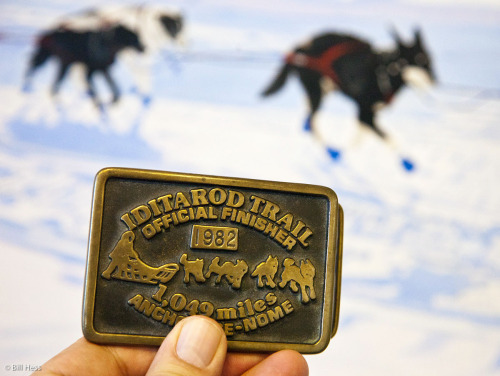
Rose brought some of her personal mementos to the show from inside the box. Among them was this belt-buckle that she earned when she ran and finished the race in 1982. Rose, who was born on the Nowitna River and grew up in Ruby, was the first Alaska Native woman to do so.
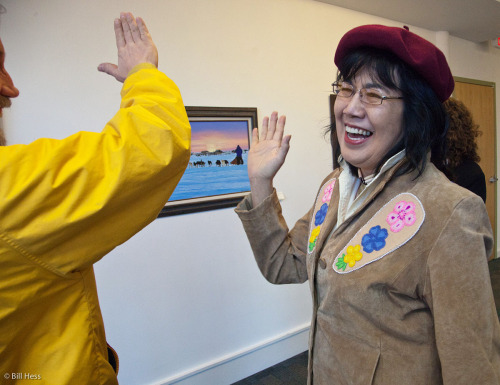
That's Jeff Schultz doing a high five with Rose. When it comes to photography, Jeff is Mr. Iditarod. This will be his 31st year straight following the race. Anyone who has seen much Iditarod photography has seen Jeff's work.
His image of Dee Dee Jonrowe mushing through the Rainy Pass area in the Alaska Range was chosen by the US Postal to adorn the Alaska Commerative stamp on the 50th anniversary of statehood.
Jeff and his wife Joan are numbered among Rose's best friends.
Rose and Jeff did the high-five after sharing a joke about the painting on the wall just behind them. It shows the village of Eklutna and was inspired by one of Jeff's photographs - as were the other works on display.
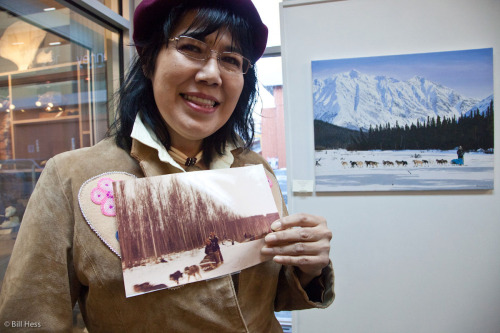
Also in the Mackey box was this picture of Rose taken during her Iditarod 1982 race. Riding the sled with her is her late brother, Howard. This is the only picture that Rose has of her historic race - the only one she knows of. I feel badly about that.
I did not know Rose in 1982, but I did hear of her and when I heard that she was going to be the first Alaska Native woman to run in the race, I wanted to cover her effort for the Tundra Times. I was still new at the paper, had not yet gained much power there and the paper did not have much money.
My request to follow or do a photo essay on her training was denied.
The next year, Rose pulled back so that her brother could run again. By then, I had a little more power and the Tundra Times allowed me to go spend a couple of days with Rose and Howard at their trapping cabin 50 miles upstream from Ruby, at Barron Slough, fifty miles up the Yukon from Ruby. Rose's dad gave the slough that name after a barron moose cow that roamed there. "My happiest memories in life were spent there," Rose says.
It was a wonderful couple of days. Someday, when I write my big -wandering-Alaska-memoire, I think I might begin right there, at Kokrines Creek.
Even though I got to spend that time with them, the Times denied my request to allow me to follow Howard on the race. I can't blame them. I had not yet learned to fly, I did not have my little airplane, we would have had to charter an airplane and that would have been extremely expensive.
Late the following summer, in a black and tragic moment, Howard left this life behind.
I badly wanted to go to his funeral in Ruby, but the Times said no, if the paper went to the funeral of one prominent Native, then we would have to go to the funerals of all prominent Natives and that would take up too much of our time and resources.
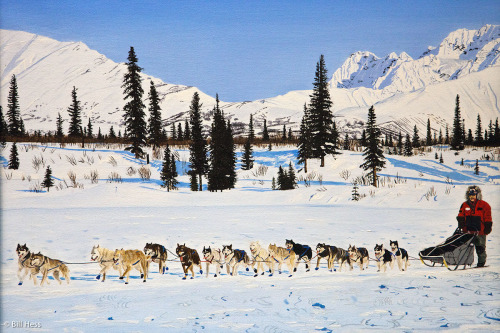
Among the paintings hung was this one of my friend, Mike Williams, who gained fame as the Sobriety Musher after he lost six brothers to alcohol abuse and used the Iditarod Trail to launch his personal war against alcohol and substance abuse.
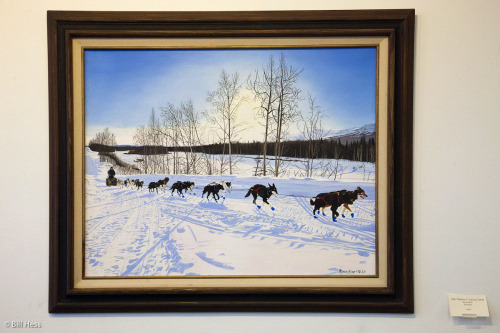
And this is Rose's depiction of Mike Williams Jr., Mike's son, who will be racing again this year.
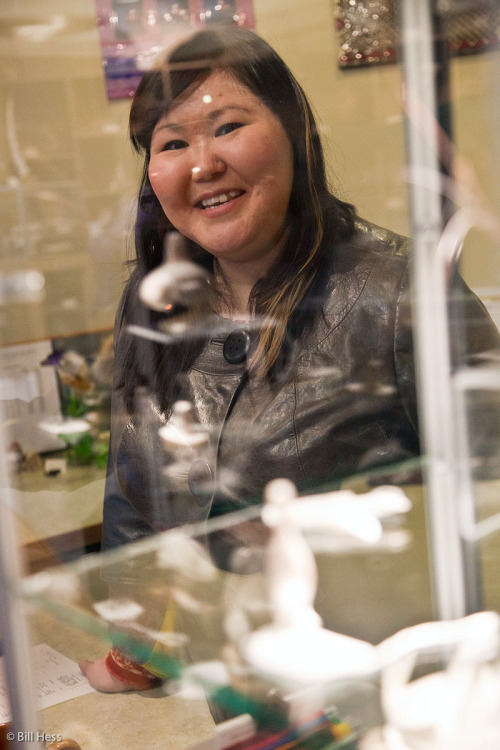
This is Trina Landlord, who works at the gallery and was overseeing last night's opening. Trina keeps a blog of her own, Eskimo to the World.
So now readers who haven't already have two new places to visit - Trina's blog and the Alaska Native Art Foundation.
Among those who came to see the show was Glenn Elliot and his five year old daughter, Abigal. Glenn grew up in Bethel but now lives in Anchorage, but works as a guide in many of Alaska's wild regions.
As for Abigal...
...she had just lost her two front teeth and was pretty proud of it.

Alice Rogoff, cofounder and Chair of the Alaska Native Arts Foundation, purchased the painting behind them for herself. Alice is also coowner of the Alaska Dispatch. Most importantly to me, when Margie broke her knee and wrist in a bad fall that she took in Washington, DC on the day of President Obama's inauguration, Alice moved us into her Washington DC guest house and let us stay there for as long as needed for Margie to heal enough to travel back to Alaska.
It was a terribly hard trip, but it would have been so much worse without the help of Alice.
And it was Alice who invited me to present my slideshow last spring at the Alaska House in New York City, which, sadly, has since closed.
As she did last year, Alice will be following this year's race in her airplane.
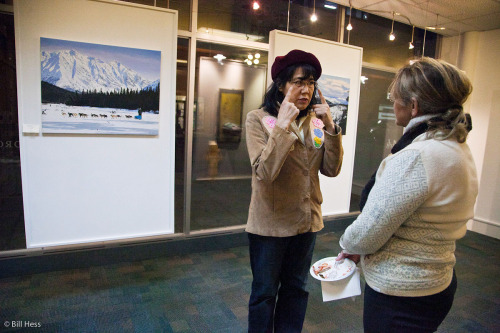
Rose explains to Alice why she decided she must make this her last art show. Last fall, Rose began to see streaks of light in her left eye. Then, when she started to work on this show, steaks of light would appear in her right eye and a film of mucas covered it and would not go away.
It grew harder and harder to paint until finally she went to an eye doctor. He informed her that she had vitreal detachment in both eyes and this would cause her vision to change for the worse. She also had a virus in her eyes and is being treated for it.
"The virus is clearing up but my vision definately got worse, making it harder for me to paint in fine detail even with glasses so I use a magnifine glass now. There is nothing that could be done for me at this point unless I start seeing shadows which would mean retinal detachment and they would have to do surgery," Rose told me in an email.
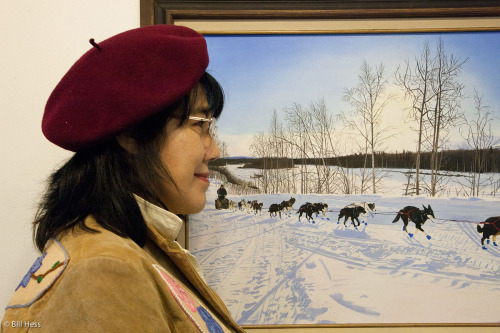
Rose's beautiful Athabascan mother also had French blood in her. By the time Rose was 16, her artistic talent and desire was clear to all of her family. Her father told her that in France, the artists all wore berets and that as she has French blood in her, she should wear a beret, too.
She took her dad's statement to heart. When she is working with and showing her art, Rose always wears a French beret.
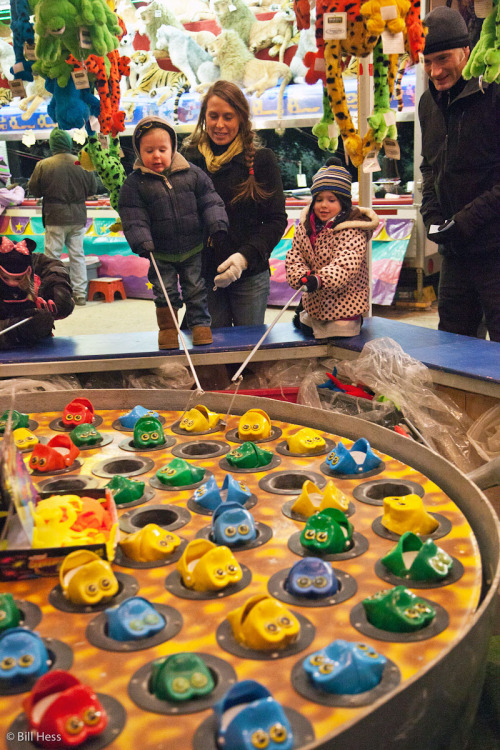
I had parked right across from the Fur Rendezvous carnival. It was cold and windy, but before I drove off, I took a five-minute stroll through the carnival. I found these kids fishing...
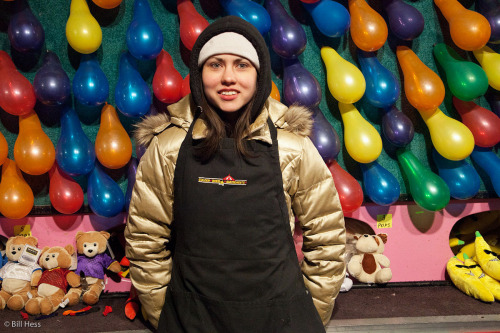
And this young woman from Phoenix manning a balloon-darting booth.

These two rode an amusement ride. On the first year that we lived in Alaska, we came by the carnival on a day that the temperature stood at -17 F, (-27 C) and the rides were packed, going like crazy. It looked crazy. It seemed crazy.
It was warmer than that yesterday - the temperature was above our F zero but well below the C zero - and it was still cold.
Especially with that biting wind.
What can I say?
Alaska is just a crazy place.
No way around it.
I love this crazy place.
Even Anchorage.
Which is too big and crowded for me.
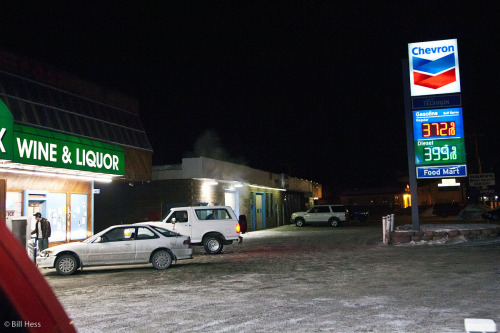
I knew that I was getting low on gas, and yet I forgot. As I approached the South Birch Creek exit, I suddenly noticed the message that I had five miles to go to empty. I thought I might turn off there and head back to Eagle River, just a couple of miles away, but there is a gas station at Peters Creek which I knew to be just under five miles ahead.
So I continued on. I was a little worried, of course, but when the gas station came into sight, the message said I had one mile to go until empty. I was in good shape.
Still, to get to the station, one must drive past the station a fair distance, take the exit, turn left, pass under the freeway, turn left again, and then drive over about a quarter of a mile to the station.
So that is what I did. But when I made the second left turn I was thinking about something else and not paying enough attention.
Then I realized, all too late, that I had turned left not onto the frontage road to the station, but into the Anchorage-bound lanes of the freeway.
Just as I got back onto the freeway, the fuel message switched to "O miles to empty."
OH NO!
The North Birch Creek Exit was less than a mile away. So I turned off there, then doubled back.
So I drove about two miles on O miles to empty, but made it back to the pump okay.
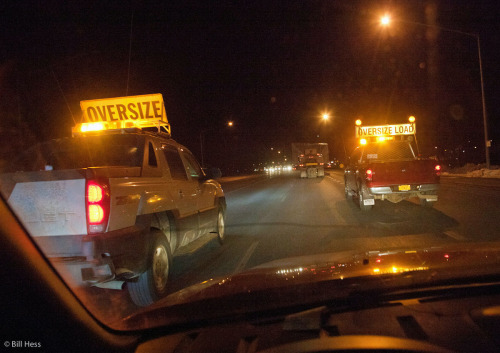
When I hit the Parks Highway, I found myself behind this wide load. There was no way around it. It was a slow drive. But in time, I made it home.

